#(BUT. epona is a celtic goddess of horses)
Text

My tribute to Epona, on the day of her namesake, Epona Day! Bountiful blessings on her feast day to you!
#horses#foal#goddess#horse goddess#celtic pagan#celtic witch#gaul#epona#epona day#festival of epona#pagan#witch#celtic mythology
394 notes
·
View notes
Text

Celtic mythology : Epona - goddess of horses and fertility
32 notes
·
View notes
Text
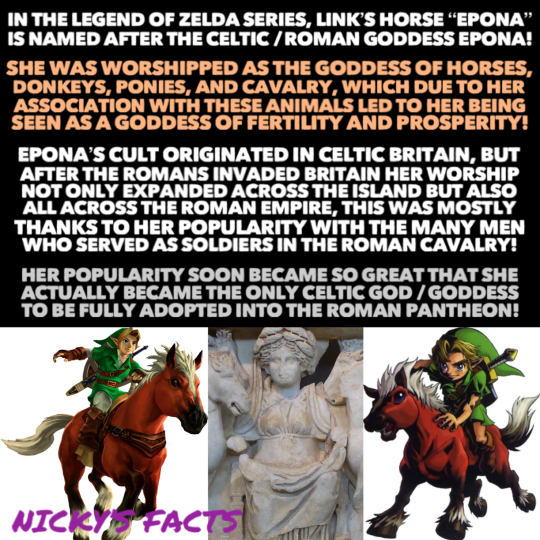
All hail the Celtic goddess of trusty steeds!
🐴
#history#epona#horse#video games#legend of zelda#celtic#mythology#roman empire#goddess#cavalry#british history#donkey#nintendo#celtic britain#britain#celtic history#myth#divine feminine#roman britain#gamer girl#legend of zelda ocarina of time#celtic mythology#fertility#roman pantheon#roman history#ponies#uk#video game history#celtic goddess#nickys facts
49 notes
·
View notes
Text
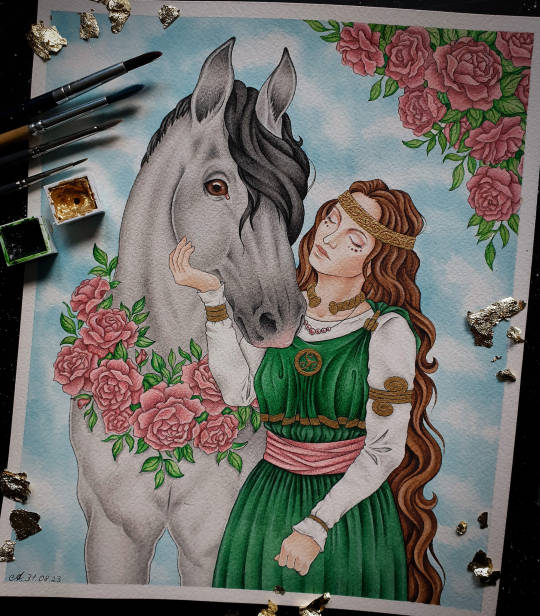
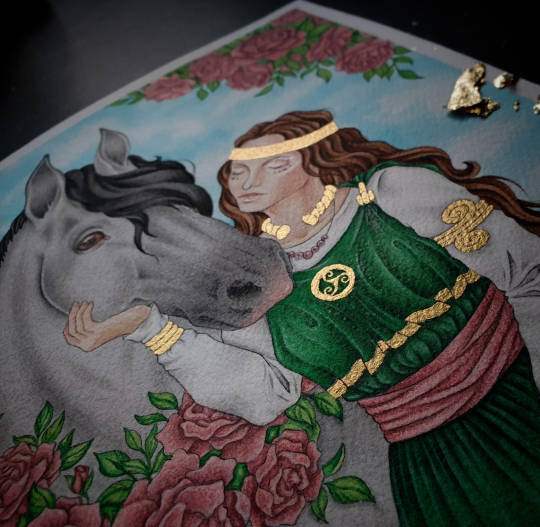
A Rose for Epona...
#my art#original art#epona#epona goddess#celtic mythology#roman mythology#horses#celtic goddess#roman goddess#watercolours#watercolour illustration
4 notes
·
View notes
Text
should i post my scraps of shenanigans? i guess they qualify as linked universe
#libra.txt#they turned more into my version of the links as it went along#but it could still be fun to post#also lu is popular and i crave attention#would it be better to post them as separate chunks?#or one fic with multiple unrelated chapters#idk!#i need a name for my bunch of links au#i am still sticking to calling them a chain bc that joke is too funny to pass up#i just want to write about MY versions of them#charm..... ily#i need the world to know my hc abt sws link's loftwing okay#(you know how loftwings are skyloftian soulmates?)#(well. if link comes back over and over. so should his soulmate)#(but loftwings don't go to the surface)#(so. enter epona.)#(BUT. epona is a celtic goddess of horses)#(so. you know who was a predecessor to epona?)#(rhiannon and/or rigantona)#(rigantona was apparently goddess of both birds AND horses)#(and is related to epona)#(SO. nerdy.)
3 notes
·
View notes
Text
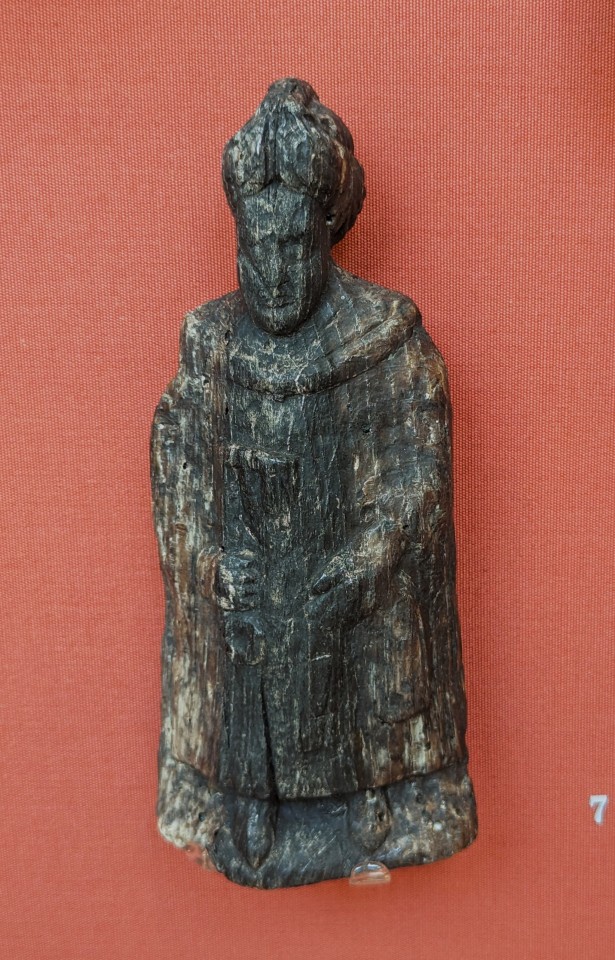
Oak Statuette of the Goddess Epona from Winchester, England dated to the 1st Century CE on display at the Winchester City Museum in Winchester, England
This small statue is thought to be the Gallo-Roman goddess Epona who was a protector of horses and goddess of fertility. While Epona's origins are from Celtic peoples the goddess proved to be very popular amongst the cavalry regiments in the Roman army. She was the sole Celtic diety worshipped in the city of Rome due to this.
Photographs taken by myself 2023
#art#archaeology#history#celts#celtic#england#english#ancient#roman empire#winchester city museum#winchester#barbucomedie
211 notes
·
View notes
Text
NAKSHATRAS AS GODDESSES
1/27
🐎ASHWINI🐎
DISCLAIMER: This is based solely on my research and the patterns that I saw. I can't promise that I'm gonna be sure in all the coorelations, but I'm going to attribute each nakshatra a goddess that I think fits it the closest. If you're dissapointed, to make up for it, I'm going to list some other deities in the end that I think also fit the nakshatra. Don't come for me if you think I'm wrong, be respectful in the comments if you think so and have fun 🤍
While researching, at first it was obvious that no deity was as perfect for Ashwini as Ashwini Kumaras themselves. I still tried to search for a Goddess that would be most similar to this nakshatra's energies and I kid you not, I've found the exact goddess I was looking for. Definitely was not expecting this.
Saule
Pronounced "sow-lay"

Pantheon: Lithuanian
Name meaning: The sun
Main associations: The Sun, fertility, healing, helping women and children, red apple, gold.
Symbols: The Sun, apples, colors gold and red.
The Baltic people believed the Sun to be a disc, dancing and rolling around. Saule is the literal representation of the sun, who, not unlike the Greek god Helios, rides a chariot pulled by two horses. The horses are mostly described as white and sometimes golden, and they're called, believe it or not, the Asviniai. It seems that the word has an Indo-European root.
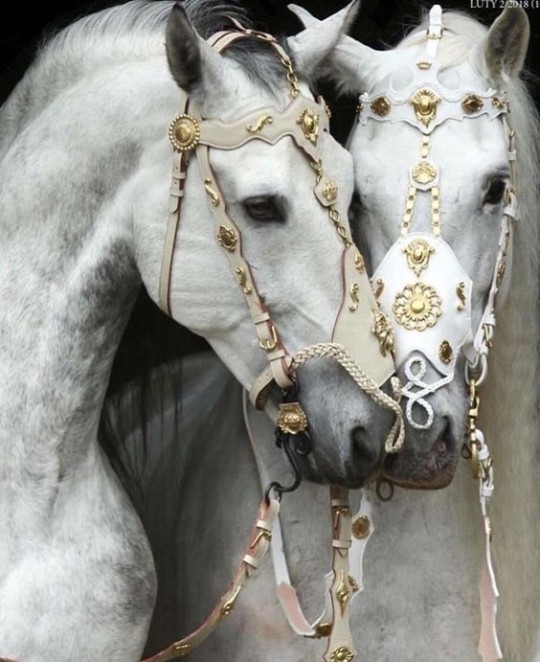
The deities assigned to Ashwini are Ashwini Kumaras_twin horsemen, depicted as young, healthy and handsome men who can heal people.

Like their power, Saule is associated with healing, regeneration and also fertility. She rides in her copper-wheeled carriage with her trusted horses, flying through the sky every day, bringing light and warmth to Earth. In regards to her appearance, she's frequently depicted with long golden hair, as well as being associated with gold and amber in general. She's described as being dressed in golden silk. Being the goddess of health and vitality, she had horses that would never tire nor sweat.
At night Saule would bathe her horses and go to the underworld. She was married to the moon god Menesis. Their first child was Earth, then followed other children: the Stars. It's said that her husband was very carefree, sometimes sneaking out of their castle in his moon carriage, thus leaving the world to darkness. Despite having a husband, ultimately, Saule is a sovereign and independent goddess.
As the setting sun, Saule is known as the falling red apple, a ring or a crown. She's strongly associated with the color red, and also apples and apple trees. Other plants associated with her are daisies, sunflowers, roses and linden.
Saule is honored every year at summer solstice.

I want to talk a little about why I coorelated her to Ashwini but first, I'll talk about the goddess extremely similar to her- Norse goddess Sol/ Sunna. She's also associated with the sun, healing, regeneration and has a chariot pulled by two horses, one of which is called Allsvinn (very fast), the other is called Arvak (early rising). Also, one of her many names literally means "Gold".
I think the association of these goddesses with Ashwini kumaras is clear, but I chose the Baltic goddess saule as to me the Baltic culture is more similar to Ashwini's energies than the Norse (You'll definitely see Norse goddesses in this series tho). Baltic people also have gods which are basically their equivalent of Ashwini Kumaras, twin horsemen gods called Ašvieniai. It's crazy to me that two cultures that you wouldn't think have anything in common basically share a deity.
Other deities that can be associated with Ashwini other than Saule:
Sunna- Norse goddess of the Sun, healing and fertility.
Ašvieniai- Baltic twin horsemen gods who have a gift of healing
Rhiannon- Celtic goddess known as "The Horse Queen", goddess of movement, leadership, the night, the moon and death.
Epona- Celtic goddess most strongly linked to horses (and you can tell by her name)
That's it for Ashwini🤍❤ I love my horse- people😅🤍 I genuinely do, there's no one like you guys, you are very healing and refreshing to be around. Keep going 🐎🐎
Don't forget to comment if u liked this or you can interact in any way .
#ashwini#ashwini nakshatra#baltic mythology#saule#goddess saule#nakshatras#vedic astrology#ashwini kumaras#sun goddess#sun in ashwini#moon in ashwini#ascendant in ashwini#moon in ashwini nakshatra#sun in ashwini nakshatra#ascendant in ashwini nakshatra#ketu in ashwini#ketu in ashwini nakshatra
94 notes
·
View notes
Photo
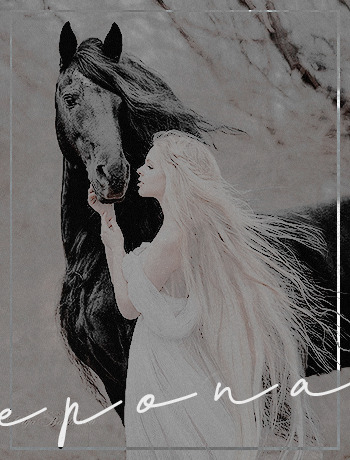

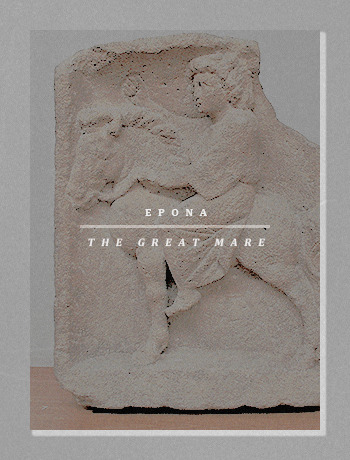

mythology aesthetic – — epona ( celtic )
goddess of horses, travelers, and dreams.
335 notes
·
View notes
Text
Epona literally being the name of the goddess of horses in Celtic mythology and then BotW making a god of horses and naming it after Malon instead of Link’s horse Epona was an peculiar move in retrospect
#legend of zelda#breath of the wild#tears of the kingdom#ocarina of time#epona#Malon#gaming#Nintendo#Malanya
31 notes
·
View notes
Text
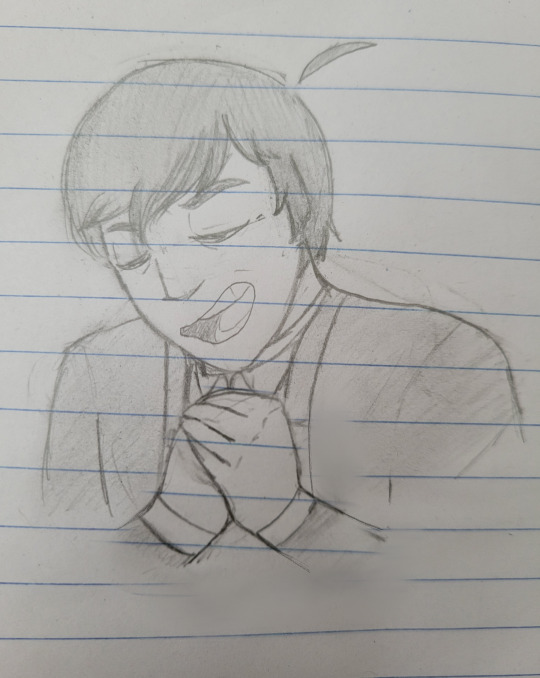
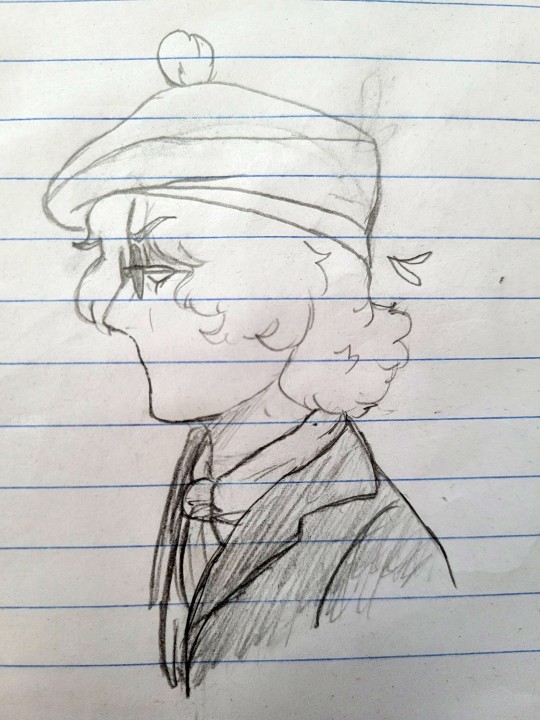
I tried to do the disguises Zira and Crowley did while watching Warlock for GO TwoJamie
Made Two a priest cuz of The Omen and Father Brennan
And I made Jamie.. Well.. The nanny. Nanny Epona, named after the celtic goddess of horses. Cuz Jamie rides horses. The Bentley is a horse in this.
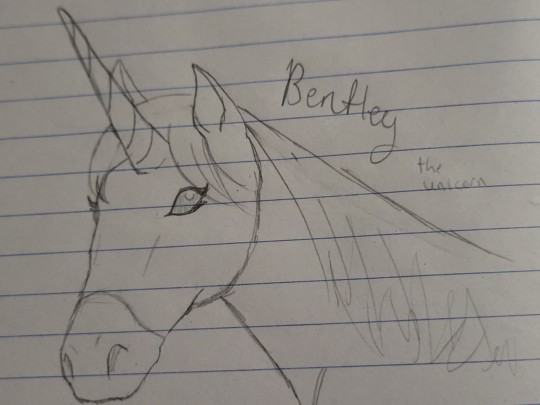
Here's Bentley
#doctor who#art#sketch#fanart#classic doctor who#classic who#jamie mccrimmon#2nd doctor#twojamie#good omens x doctor who#Tybalt's arts and crafts
15 notes
·
View notes
Text
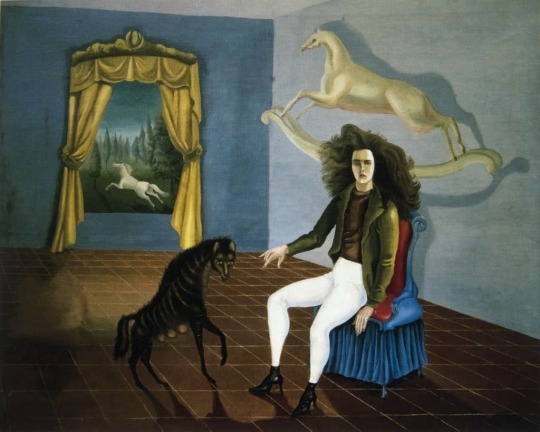
SELF PORTRAIT (THE INN OF THE DAWN HORSE), (1938-39) by LEONORA CARRINGTON
The painting portrays LEONORA at the centre of the room, where a lushly decorated window overlooks a distant landscape featuring a horse. LEONORA is depicted in a white, JODHPUR-STYLE outfit, her hand reaching towards a lactating hyena.
Above and behind the wild crown of her hair, a white, tailless, rocking horse stands with its eyes staring straight ahead at the viewer. The first of many Surrealist paintings by CARRINGTON, this one is full of symbolism.
The appearance of a horse in CARRINGTON’S work would prove to be a theme in her oeuvre, representing freedom and independence.
From her childhood nanny's interest in Celtic mythology, it's likely that Carrington was familiar with EPONA, the Celtic goddess of fertility who rides a white horse. When it comes to the hyena, Carrington was familiar not just with horses, but with the animalism of the hyena.
34 notes
·
View notes
Text

Epona Day piece, WIP #2!
I wanted to redraw the horses after getting some more time this evening to properly compile references. ALSO I feel the significance of Epona travelling from left to right should be preserved, so flipped the piece!
57 notes
·
View notes
Note
Stormy! Celtic Zelda fact!
So apparently Epona is also a Celtic goddess; her name means “divine mare” and protects horses, donkeys, and other riding animals! Guess that makes the stable people’s reactions to Epona in breath of the wild a lot more meaningful then just her being a reference to other games XD
Cool! Does your new Celtic book have a story about that? I read one sentence on Wikipedia that said that Epona was a Celtic deity but I haven't been able to find anything else about it anywhere. It makes sense then why Epona keeps getting reincarnated as part of the LoZ cycle.
#I wanna go to the bookstore and see what celtic mythology books I can find now#but that costs moneyyy#an unexpected ask#ladye my beloved#celtic companion#dear sibling
9 notes
·
View notes
Text
TYPES OF DEITIES
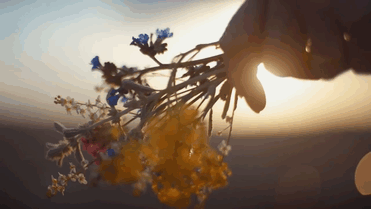
GREEK, ROMAN, AND SOME CELTIC DEITIES:
• Aphrodite: Goddess of love.
• Ares: God of war.
• Artemis: Goddess of the hunt, the wilderness, wild animals, nature, vegetation, childbirth, care of children, and chastity.
• Athena: the warrior Goddess.
• Adonis: a God associated with the cycle of life, death and rebirth; beautiful lover of Venus who dies but is reborn every spring.
• Aesculapius: God of healing.
• Anna Perenna: personification of the year (annus), whose festival on 15 March involved drinking and singing of licentious songs by women.
• Annona: numen / spirit / personification of the food supply.
• Antinous: deified 19 year old (probable) lover of Hadrian; associated with young, masculine beauty, love and homosexuality.
• Apollo: God of light and the sun, healing (and disease), music (especially stringed instruments), poetry, archery and prophecy.
• Attis: Cybele’s consort.
• Aurora: Goddess of dawn.
• Bacchus: God of the vine, grapes, fruitfulness, vegetation, wine, ecstasy and madness.
• Bellona: Goddess of war and belligerence.
• Bona Dea (also Damia): the “good Goddess”; fertility Goddess mostly worshipped by women; see also Fauna.
• Camenae: healing Goddesses identified with the Greek Muses, thus music.
• Cardea: Goddess of door hinges and handles.
• Castor and Pollux: Gods of camaraderie and strong friendship; associated with sailors and men of the cavalry who travel far and wide.
• Ceres: Goddess of agriculture, plant growth and crop fertility.
• Clementia: Goddess of mercy and clemency.
• Concordia: Goddess of Concord.
• Consus: God of the granary/grain storage.
• Cupid: God of love and desire.
• Cybele: see Magna Mater.
• Dea Dia: agricultural Goddess of growth.
• Demeter: Goddess of harvest and agriculture.
• Diana: chaste Goddess of the hunt, animals (esp. wild), woodlands, childbirth, light and the moon.
• Dii Familares: collective term for all household Gods; guardians of home and family; includes the Lares, the Penates, Janus, Vesta, etc.
• Dionsus: God of wine and pleasure.
• Dis Pater (also Orcus or Pluto): God of the Underworld and mineral wealth.
• Discordia: Goddess of discord and strife.
• Dius Fidius: God of oaths; though Jupiter is also strongly associated with oaths.
• Dryad: general term borrowed from Hellenism denoting a tree Deity.
• Egeria: protectress of pregnant women and childbirth; a water spirit worshipped in connection with Diana and the Camenae.
• Epona: Celtic Goddess of horse riding whose cult was adopted by the Roman cavalry and spread throughout much of Europe.
• Eros: God of passion and lust.
• Fama: numen / spirit /personification of rumour, fame and infamy.
• Fauna: Goddess of the fertility of woodlands, fields, and flocks; counterpart to Faunus; possibly another name for Bona Dea.
• Faunus: God of the earth who brings fertility to fields and flocks; associated with sexuality and pleasure.
• Fides: numen/spirit/personification of good faith, trust and honesty.
• Flora: Goddess of flowering plants; associated with spring, fertility and sexual licentiousness.
• Forculus: God of doors.
• Fortuna: Goddess of increasing prosperity, good fortune, ill fortune, chance and luck.
• Gaia: the Earth Mother.
• Genius: protecting male spirit; the feminine counterpart is a “juno”.
• Graces: Goddesses of charm, grace and beauty; hence associated with Venus.
• Hades: Ruler of the Underworld.
• Hecate / Hekate: Goddess of magic, witchcraft, and sorcery.
• Hebe: Goddess of youth or of the prime of life.
• Hestia: Goddess of the hearth, home, and hospitality.
• Hera: Goddess of marriage.
• Hestia: guardian of hearth and home.
• Hercules: God of heroism, strength and perseverance.
• Honos: numen/spirit/personification of honour and virtus.
• Janus: God of beginnings, transitions, openings, closings and entrance-ways.
• Juno: Goddess of women, marriage and motherhood.
• Jupiter: protecting God of the sky and weather, especially thunder, lightning, rain and storms; also associated with the swearing of oaths.
• Juturna: Goddess of fountains.
• Juventas: Goddess of youth.
• Lar (Plural Lares): protecting spirit/s of the household.
• Larvae (also Lemures): malevolent spirits of the dead.
• Latona: mother of Apollo and Diana (twin deities of light).
• Liber: see Bacchus.
• Libera: consort of Liber / Bachhus; identified with the Greek Ariadne.
• Libertas: numen/spirit/personification of liberty and personal freedom.
• Libitina: Goddess of the dead, funerals and burial.
• Limentinus: God of the threshold.
• Lucifer: the Morning Star; literally “bringer of light”.
• Luna: Goddess of the moon, may be considered an aspect of Diana.
• Lymphae: general term for Deities of springs, streams and similar water divinities; similar to Greek Naiads.
• Magna Mater: Phrygian earth Goddess of nature; great mother of all.
• Manes: spirits of the dead, generally friendly.
• Maia: Goddess of nursing mothers.
• Mars: God of violence, war, valour and virility.
• Matuta: Goddess worshipped mostly by young women; associated with growth, Aurora and the Greek Leucothea.
• Mercury: God of financial gain, trade, travel, writing, language, communication, cunning, trickery and psychopomp.
• Minerva: Goddess of skilled thought leading to skilled action, thus wisdom, workmanship and strategy.
• Miseria: numen / spirit / personification of misery and wretchedness, Cicero refers to her as kin to other spirits of unhappiness, including Dolus (deceit), Metus (anxiety), Invidentia (envy), Mors (death), Tenebrae (darkness), Querella (lamentation), Fraus (fraud / delusion) and Pertinacia (obstinacy). We may add to this list Melancholia (alternately, Melancholica); note that mania and psychosis almost certainly belong to the domain of Bacchus. See also Discordia.
• Mithras: Persian God of light.
• Nemesis: Goddess of retribution.
• Neptune: God of water, the sea and horses.
• Nox: Goddess of night.
• Nundina: Goddess associated with the purification and naming of children (for girls on the 8th day; for boys on the 9th).
• Ops: Goddess of the wealth of the harvest, consort to Saturn.
• Osiris: consort to Isis.
• Ouranos (also known as Uranus): God of the sky.
• Pales: Deity of shepherds, flocks and livestock.
• Pan: the goat-legged fertility God.
• Parcae: Goddesses of childbirth and destiny (Nona, Decuma and Morta); determining the length of a person’s life and their allotment of suffering.
• Pax: Goddess of peace.
• Penates: spirits of the household provisions / food stores / pantry.
• Pluto: God of the Underworld (in Roman mythology).
• Plutus: God of abundance or wealth.
• Picus: agricultural Deity associated particularly with the fertilisation of the soil with manure; associated with Faunus.
• Pietas: personification of a respectful and faithful attachment to Gods, country and family.
• Picymnus and Pilumnus: agricultural Gods associated with childbirth.
• Pomona: Goddess of fruit.
• Portunus: God of harbours.
• Poseidon: God of the the sea (and of water generally), earthquakes, and horses.
• Priapus: God of animal and vegetable sexuality and fertility; protector of gardens, and lust.
• Prosepina (also known as Persephone): Goddess and Queen of the Underworld, wife of the God Haides (Hades). She was also the Goddess of spring growth, who was worshipped alongside her mother, Demeter, in the Eleusinian Mysteries.
• Quirinus: deified Romulus, the founder of Rome.
• Rhea: Goddess of motherhood, fertility, childbirth, and comfort and good living.
• Robigo: God of mildew and wheat rust, a fungal disease affecting grain. Robigo can therefore protect crops from wheat rust.
• Roma: numen / spirit / personification of Rome.
• Rumina: Goddess of breastmilk.
• Sabazius: Phrygian God of vegetation.
• Salus: Goddess of safety, good health and well-being.
• Serapis (also Sarapis): Greco-Egyptian God of the sky; associated with healing and fertility.
• Selene: Goddess of the Moon; or, the personified divine being of the Moon.
• Saturn: God of agricultural abundance, sowing, seeds and mythological ruler of a past golden age.
• Silvanus: God of the woods and fields.
• Somnus: God of sleep.
• Sol: God of the sun, may be considered as another name for Apollo.
• Spes: numen / spirit / personification of hope.
• Tellus: Goddess of the earth; Ovid states she is one and the same as Vesta.
• Terminus: God of property boundaries; may be associated with steadfastness.
• Trivia: (also Hekate / Hecate), Goddess of crossroads (usually three-way), ghosts, the undead and witchcraft.
• Venus: Goddess of love, relationships, passion, pleasure, beauty, charm and fertility.
• Veryumnus: God of orchards.
• Vesta: Goddess of ritual-fire, hearth-fire, and home; associated with purity and virginity.
• Victoria: Goddess of victory, especially military victory.
• Vulcan: God of destructive and fertile (creative) fire.
• Zeus: Ruler of Olympus.
PAGAN GODS AND GODDESSES:
CELTIC DEITIES:
• Brighid: Goddess of spring, fertility, and life.
• Cailleach: Goddess of the cold and the winds.
• Cernunnos: God of animals, fertility, and wild places.
• Cerridwen: Goddess of change and rebirth and transformation and her cauldron symbolizes knowledge and inspiration.
• The Dagda: God of fertility, agriculture, manliness, strength, magic, druidry, and wisdom.
• Herne: God associated with the Wild Hunt.
• Lugh: God of the sun and light.
• The Morrighan: Goddess of war and sovereignty
• Rhiannon: Goddess of horses, forgiveness, rebirth, the moon, and fertility.
• Taliesin: Chief of Bards.
EGYPTIAN DEITIES:
• Anubis: God of funerals and embalming.
• Bast (also Bastet): Goddess of protection, pleasure, and the bringer of good health.
• Geb: God of Earth
• Hathor: Goddess of love, beauty, music, dancing, fertility, and pleasure.
• Isis: Goddess of healing and magic, worshipped as an ideal mother and wife, as well as being a patroness of magic and the downtrodden.
• Ma’at: Goddess of truth and balance.
• Osiris: King of Egyptian Gods.
• Ra: God of the sun, order, kings, and the sky.
• Taweret: Guardian of fertility.
• Thoth: God of magic and wisdom.
NORSE DEITIES:
• Aegir: hosts the Gods in his halls and is associated with brewing ale.
• Baldur: God of light and radiance, joy and purity, peace and forgiveness.
• Baldur: God of light and radiance, joy and purity, peace and forgiveness.
• Bragi: God of poetry.
• Heimdall: Protector of Asgard.
• Frigga: Goddess of marriage and prophecy.
• Freyr: God of fertility, peace, and good weather.
• Freya/Freyja: Goddess of abundance, love, beauty, fertility, sex, war, gold, and seiðr (magic for seeing and influencing the future).
• Hel: Goddess of death and the Underworld.
• Hodur: God of winter and darkness.
• Idun: Goddess of youth, fertility, and death.
• Loki: God of mischief, trickery, and deception.
• Njǫrd: God of the wind and of the sea and its riches.
• Odin: God of all Gods, wisdom, and war.
• Sif: Goddess of grain and fertility, and one of the Asynjur.
• Thor: God of thunder and lightning.
• Tyr: God of warfare and battle.
• Váli: one of the God’s on vengeance.
THE DIFFERENT TYPES OF PAGAN DEITIES:
DEITIES OF LOVE AND MARRIAGE:
• Aphrodite (Greek)
• Cupid (Roman)
• Eros (Greek)
• Frigga (Norse)
• Hathor (Egyptian)
• Hera (Greek)
• Juno (Roman)
• Parvati (Hindu)
• Venus (Roman)
• Vesta (Roman)
DEITIES OF HEALING:
• Asclepius (Greek)
• Airmed (Celtic)
• Aja (Yoruba)
• Apollo (Greek)
• Artemis (Greek)
• Babalu Aye (Yoruba)
• Bona Dea (Roman)
• Brighid (Celtic)
• Eir (Norse)
• Febris (Roman)
• Heka (Egyptian)
• Hygieia (Greek)
• Isis (Egyptian)
• Maponus (Celtic)
• Panacaea (Greek)
• Sirona (Celtic)
• Vejovis (Roman)
LUNAR DEITIES:
• Alignak (Inuit)
• Artemis (Greek)
• Cerridween (Celtic)
• Chang’e (Chinese)
• Coyolxauhqui (Aztec)
• Diana (Roman)
• Hecate/Hekate (Greek)
• Selene (Greek)
• Sina (Polynesian)
• Thoth (Egyptian)
DEITIES OF DEATH AND THE UNDERWORLD:
• Anubis (Egyptian)
• Demeter (Greek)
• Freya/Freyja (Norse)
• Hades (Greek)
• Hecate/Hekate (Greek)
• Hel (Norse)
• Meng Po (Chinese)
• Morringhan (Celtic)
• Osiris (Egyptian)
• The Keres (Greek)
• Whiro (Maori)
• Yama (Hindu)
DEITIES OF THE WINTER SOLSTICE:
• Alcyone (Greek)
• Ameratasu (Japan)
• Baldur (Norse)
• Bona Dea (Roman)
• Cailleach Bheur (Celtic)
• Demeter (Greek)
• Dionysus (Greek)
• Frau Holle (Norse)
• Frigga (Norse)
• Hodr (Norse)
• Holly King (British/Celtic)
• Horus (Egyptian)
• La Befana (Italian)
• Lord of Misrule (British)
• Mithras (Roman)
• Odin (Norse)
• Saturn (Roman)
• Spider Woman (Hopi)
DEITIES OF IMBOLC:
• Aradia (Italian)
• Aenghus Og (Celtic)
• Aphrodite (Greek)
• Bast (Egyptian)
• Ceres (Roman)
• Cerridwen (Celtic)
• Eros (Greek)
• Faunus (Roman)
• Gaia (Greek)
• Hestia (Greek)
• Pan (Greek)
• Venus (Roman)
• Vesta (Roman)
DEITIES OF SPRING:
• Asase Yaa (Ashanti)
• Cybele (Roman)
• Eostre (Western Germanic)
• Freya/Freyja (Norse)
• Osiris (Egyptian)
• Saraswati (Hindu)
FERTILITY DEITIES:
• Artemis (Greek)
• Bes (Egyptian)
• Bacchus (Roman)
• Cernunnos (Celtic)
• Hera (Greek)
• Kokopelli (Hopi)
• Mbaba Mwana Waresa (Zulu)
• Pan (Greek)
• Priapus (Greek)
• Sheela-na-Gig (Celtic)
• Xochiquetzal (Aztec)
DEITIES OF THE SUMMER SOLSTICE:
• Amaterasu (Shinto)
• Aten (Egypt)
• Apollo (Greek)
• Hestia (Greek)
• Horus (Egyptian)
• Huitzilopochtli (Aztec)
• Juno (Roman)
• Lugh (Celtic)
• Sulis Minerva (Celtic and Roman)
• Sunna or Sol (Germanic)
DEITIES OF THE FIELDS:
• Adonis (Assyrian)
• Attis (Phrygean)
• Ceres (Roman)
• Dagon (Semitic)
• Demeter (Greek)
• Lugh (Celtic)
• Mercury (Roman)
• Osiris (Egyptian)
• Parvati (Hindu)
• Pomona (Roman)
• Tammuz (Sumerian)
DEITIES OF THE HUNT:
• Artemis (Greek)
• Cernunnos (Celtic)
• Diana (Roman)
• Herne (British and Regional)
• Mixcoatl (Aztec)
• Odin (Norse)
• Ogun (Yoruba)
• Orion (Greek)
• Pakhet (Egyptian)
DEITIES OF WAR AND BATTLE:
• Ares (Greek)
• Athena (Greek)
• Bast (Egyptian)
• Huitzilopochtli (Aztec)
• Mars (Roman)
• The Morrighan (Celtic)
• Thor (Norse)
• Tyr (Norse)
MOTHER GODDESSES:
• Asasa Ya (Ashanti)
• Bast (Egyptian)
• Bona Dea (Roman)
• Brighid (Celtic)
• Cybele (Roman)
• Demeter (Greek)
• Freya/Freyja (Norse)
• Frigga (Norse)
• Gaia (Greek)
• Isis (Egyptian)
• Juno (Roman)
• Yemaya (West African/Yoruban)
#fyp#fypシ#fypシ゚viral#fypage#fyppage#tumblr fyp#satanism#satanist#deity#deity work#deity worship#occult#norse mythology#greek mythology#roman mythology#celtic mythology#egyptian mythology#aztec mythology#germanic mythology#hindu mythology#goddess#gods#information
9 notes
·
View notes
Note
hm. horse names. does link do much with horses + what did he name any horses he has + any personalities? also what is zelda's horse named
hrose…
hm!! id say he travels a bit with horses, its how he got to kakariko hateno and such. as time goes on he uses them less because they cant climb mountains well and he doesnt want to leave them in case monsters get to them/they wander off (despawn). also as time goes on he has fast travel so he doesnt have to use horses anymore which is kind of sad. he never uses the big horse even when he catches them
for names i like to think hes bad at naming things (shaking his hand) so you end up with names like twig or signpost. for his actual horses though id say he has all 5 slots; his first and main horse is Bug, shes probably gentle temperament because thats the type of horses that dont buck you off if you dont press L fast enough. he got zeldas ancestral horse and the big horse, zeldas horse having Saff as a placeholder name (safula reference), once zelda is freed though she names them Saffron + theyre now her horse. she keeps them. for the big horse, on one hand din is a fitting name, however thats kind of like naming your cat after a god that you believe in (like jesus.) it sort of works for greek gods and such but i dont think link would actually do that so. yeag. speaking of which while looking up where eponas name comes from possibly epona is actually the name of a celtic patron goddess for foals and horses so. snorts. ANYWAYS i think a kid would name the horse instead of link, and as such their name is Dinners. both in reference to din but also “how hungry” horse. for the other two horses, one would be once he finds out wild temperament horses have better stats (though how he finds this out is questionable, considering i dont think the horse facts guy mentions it + how i found out was from a croton video </3. pre calamity he probably found out by testing and researching/reading, so post cal is either a remnant from that or the horse facts guy Does tell him and we can ignore its not actually said in the base game 👍), and one is from just. not having a horse somewhere and temporarily taming it, however they follow him when hes not riding them and they go so far he just kind of. registers them. wild horse is named Clover and the following horse is named Jerry
personality wise Saffron is a bit what youd expect (stubborn and EXTREMELY UNHAPPY to be ridden as a horse.) he warms up eventually but sometimes he still just veers off the road/turns around at max bond just to be petty/prank them. that one horse post about horses adjusting to the people riding them and making their Own decisions when driving (biting off saddles i think? something about weight…), saff would do something like that. otherwise though number 1 rated grass eater and plant stomper, would be a pain for the stable owners and will pick fights with dogs. while he accepts being a transportation animal eventually he Will Not move cargo. that is his one rule, you will Not put on a wagon attached to his saddle he will make so many horse noises about it. Dinners is less stubborn and more blood thirsty. she Will run over herons without input from link. running over bokoblins is her favorite past time. however she also is a huge horse fan in general, especially with the little horses she can be found with. she doesnt really pick fights but she does bite sometimes. not out of malice but curiosity. or sometimes just because she can. get bit nerd. she actually likes having cargo it becomes a challenge to go as fast as possible without dropping it (which leads to stress inducing situations sometimes). otherwise she just chills mostly. would probably sleep in a weird position. she would run over donkeys if she could. Bug is just friendly. a chronic wander, but friendly! because she wanders if link isnt really telling them to go anywhere they just move on their own like minecraft horses. and because of this link cant leave them anywhere because theyll be on a completely different part of the map then where he left them. huge fan of flowers for food and also apples. to be fair all horses are but she gets the most apples out of all of links horses (favoritism). would probably eat a bee hive/wasp nest (fun fact!! beehives in botw are actually really similar to wasp nests rather than actual beehives!!). theyre indifferent to cargo. Clover is Fast. a bit less spurs but they are So Fast. constantly picking things up no matter what they are/the cons of quences. they are The cargo horse. like the name implies they like to eat clovers, and they also have like. grass in their mouth constantly like a cowperson. they would absolutely herd animals. big fan of ruins honestly they just smell weird. every time theres a split in the road they always go the opposite direction of what link needs and he has to steer them the other way around. would crash into trees quite a bit. also energetic constantly they Need to be doing something always. also yes this horse is a reference to clover undertale yellow. and finally Jerry. just a horse, no thoughts head empty. completely chill. stands there as link gets mauled by a moblin
pre calamity zeldas horse was named Selig (and named for her rather than by her considering the compendium entry states that the royal family rode them to display their “divine right”, so its less likely itd be named for fun and more named to be Official and OoOo Goddess Powers, so i like to think a priest named them), but in secret she named them Lilium Woodriff Orientalis (the scientific name for stargazer lillies, Woodriff being the last name of the person who bred them. this is a reference to silent princesses and Blue Heart Lillies- blue heart lillies often being cited as a real world counterpart to silent princesses, however those lillies actually dont exist. theyre always a scam and are actually photoshop recolored stargazer lilly. in universe explanation is that its just a scientific flower name she liked a lot and she wanted to seem cool for knowing it. post calamity she’d call them stargazer even though the horse is long gone. maybe she’d name another horse that in memory?) and uses their full name always instead of a nickname. and because of this she eventually forgets selig as a name and everyone either thinks its a new horse or is cool with it. the priest is kind of exasperated but cant do anything about it. links pre calamity horse is named Epona because im a sucker for that sort of stuff, however is not The Epona (like from the amiibo or oot or tp etc). its more of a name he liked a lot especially because of the epona legends (and also in the memories his horse has a different mane/coat color from epona herself so. yeag). he too wanted to be seen as cool. he’d use her like how merchants use donkeys . light storage system
also fun fact!! the stable has a corporation of sorts!! 50 years before the calamity the Epona Co. was established (creating a champion page with stable info), and it has a logo and everything. said logo is on the hats of stable workers and also on the blankets covering crates. the stable association is under that corporation but seemingly a different thing, and also on the sanidin park ruins you can actually see the logo on the base of the statue, so they had a part in that as well!! i dunno i just think its so neat and im so sad we dont know anything about the park ruins besides being a spot to view the castle. i like to think its a memorial to a horse (whether it be someones pet horse, or a horse who did something historical (like laika or balto, though laika and balto are dogs not horses), and also im not making this an epona statue i. it feels weird to clarify that however with all the epona talk . yeah. also off topic but epona and ganons horse being plushes in majoras mask is so cool and i really want ganondorfs horse to have a name now. like why dont they have one…). alsoalso you probably know this but the top of stables (horse heads) have malanyas face, implying its an effigy of sorts. alsoalsoalso theres an unused compendium photo for epona.
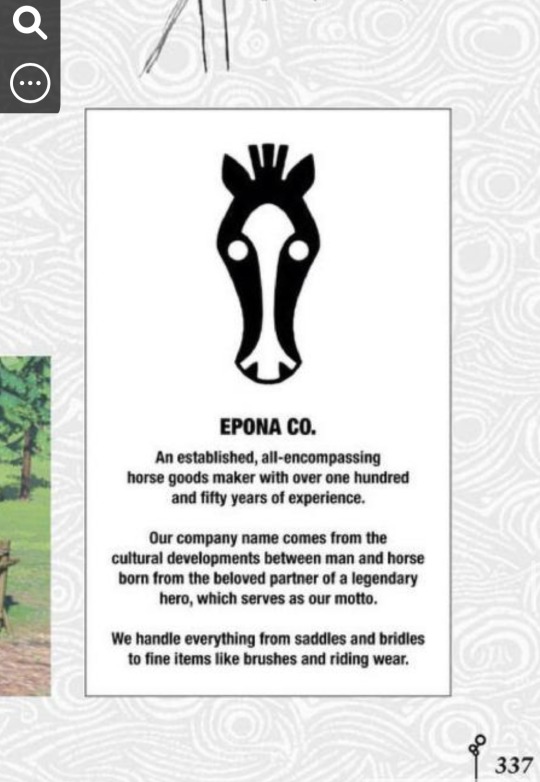
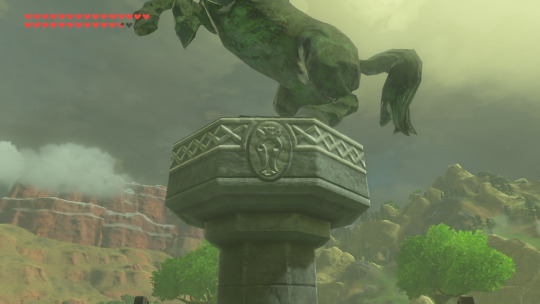
theres also more horse variants (knight horses and festival horses) but. another time.
#HELLO!!#wreath of the bild#sorry if this seems. off? the hauntings have been going on you see#anyways honestly thanks for this i. needed a name for links horse#i couldnt keep calling them [horse] when writing to edit later
5 notes
·
View notes
Text
Never knew this, don’t know if anybody knew about it, but Link’s horse Epona was named after the gaulish celtic horse goddess...Epona.

until we meet again
39 notes
·
View notes